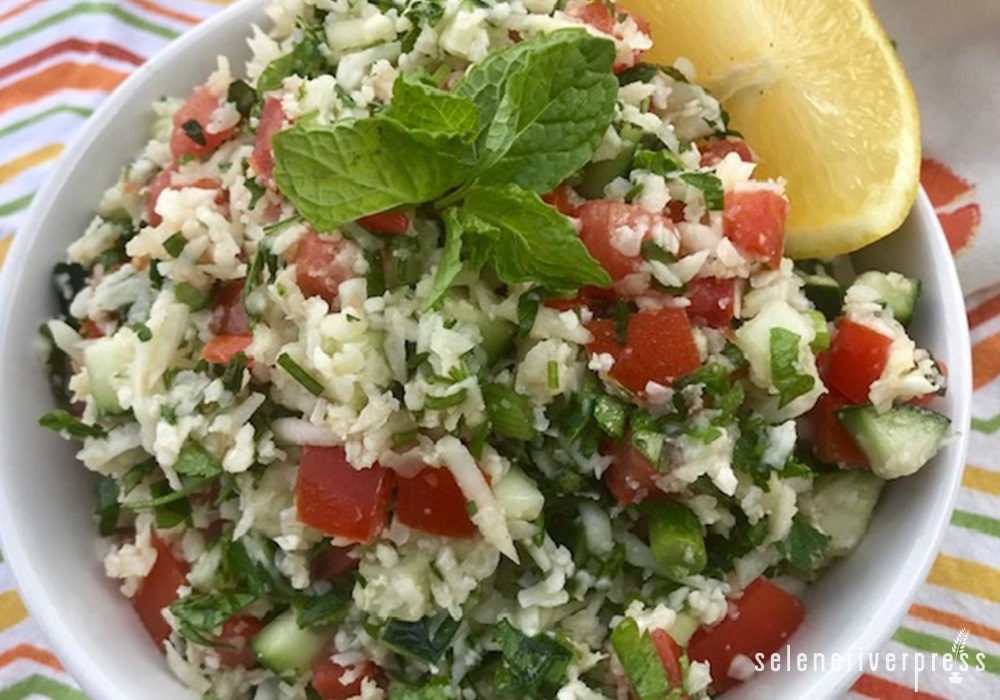Those who have been reading my blog for some time now, might know that one of my favorite things to do is revamp classic recipes, to make them more wholesome and fitness-forward, and to suit restrictive diets and alternative lifestyles. Those who are new to the site, welcome! I hope you find a wealth of health-conscious information here.
I personally don’t eat a lot of grains, so one of my all-time favorite things to do is upgrade the foods I love to fit within such parameters. There are a host of grain alternatives out there for baking, usually nut, coconut, or legume-based. But I particularly enjoy incorporating more veggies into my diet, in lieu of grains.
Cauliflower has emerged on the scene lately as a great, low-carb substitute, and has become a valued ingredient for me, particularly for experimentation. It is loaded with beneficial nutrients, especially vitamins C & B6, potassium, and fiber. Its sugar levels are incredibly low, making it a great vegetable for those in practically any dietary situation, even folks on strict regimens, and those needing to watch their blood sugar. I’ve made everything from cauliflower-based sushi to fried rice to mashed “potatoes,” and I’m always on a quest to find new ways to use it.
Which is how we come to this week’s recipe.
Tabbouleh is one of my favorite salads. Full of bright, fresh flavors, this Middle Eastern classic makes a delicious accompaniment to any main meal, particularly grilled meats. Full of chlorophyll-rich herbs and lemon, the salad has enough bold punch to still be delicious even when tomatoes and cucumbers aren’t fully in season. It made perfect sense to experiment with substituting the traditional cracked bulgur wheat with cauliflower.
The end result was pretty spectacular, and even those who love their grains will have a hard time resisting it. The biggest key is to squeeze out some of the liquid from the lightly steamed cauliflower to create a drier texture, more akin to a grain than a vegetable. The squeezing process also keeps the flavors amplified, not diffused or watered down. We are left with a bold and refreshing grain-free side dish, suitable for vegans and those following a paleo or keto diet. Make this stuff in big batches, because it’s pretty addictive, and feel free to embellish with other yummy additions, like crumbled feta, avocado, or even stone fruit, like peaches. You’ll notice in the recipe below that I’ve approximated the dressing quantities. The amounts will depend on the size of your cauliflower head, and how much liquid you expel from it. So, start with the quantity listed, then adjust the amounts to suit your tastes.
Cauliflower Tabbouleh
Makes approximately 6 cups
Prep time: 20-30 minutes
Cook time: 10 minutes
Ingredients
1 large head cauliflower, broken into pieces
4-6 Roma tomatoes, seeded and diced
1 cucumber, diced
1 bunch parsley, finely chopped (about 1½ cups chopped)
3 green onions, finely chopped
1 handful mint leaves, finely chopped (about ½ cup chopped)
2 cloves garlic, minced
6 tablespoons extra virgin olive oil, or more to taste
¼ cup lemon juice, or more to taste
Salt and fresh cracked pepper to taste
Method
- Place cauliflower pieces in the bowl of a food processor fit with a blade. Pulse until cauliflower resembles rice in texture. I like my cauliflower to be a bit more toothsome for this recipe, so be sure not to grind too finely. Do this step in batches if necessary, so as not to puree too much.
- Once all cauliflower has been “riced,” place in a pot with an inch or so of water and steam until just tender, about 10 minutes. Drain in a sieve and let cool until it is easy to handle.
- Place scoops of cauliflower in the center of a clean, dry kitchen towel or cheesecloth, and squeeze liquid out by twisting the towel to leave the vegetable as dry as possible. Place squeezed cauliflower in a large bowl.
- Chop all other ingredients and add to cauliflower.
- Drizzle with olive oil and lemon juice and season liberally with salt and pepper. Taste and adjust seasonings to your liking.
- For best results, let marinate for at least 20 minutes before serving.
Images from Briana Goodall.


